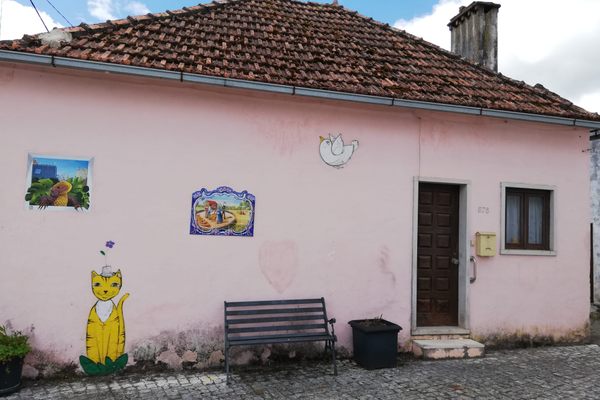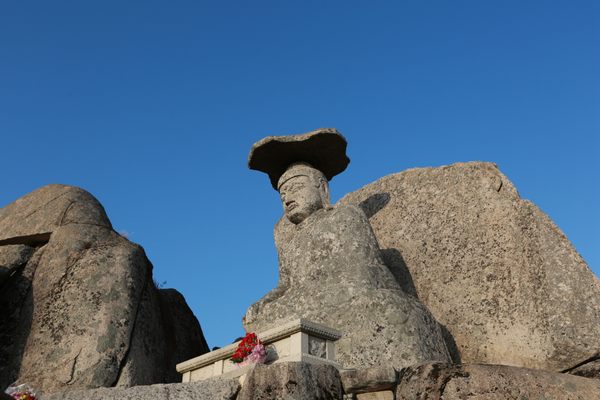AO Edited
'Veado'
A deer-headed statue that brings together a 12th-century legend and big wave surfing.
If you want to know what you can find at this site, it’s a 6.3-meter (21 ft) statue of a human figure with the head of a deer, holding a surfboard. But if you want to know how exactly this enigmatic statue came about, it’s a long story that goes back to the earliest days of Christianity.
In the fourth century, a Greek monk by the name of Ciriaco “rescued” a statuette called Our Lady of Nazareth that was believed to have been sculpted by none other than Saint Joseph. It is said that the statuette was passed on from Saint Jerome to Saint Augustine, and it eventually landed in Spain, at the Cauliniana Monastery. It remained at this monastery until the year 711, when the Moors were on the monastery’s doorstep. A monk named Romano fled with the statuette, taking refuge in a fishing village that would eventually be named Nazaré, where he decided to live the rest of his days as a hermit in a grotto by the sea. That grotto would house the statuette for the next several centuries.
On September 14, 1182, a noble warrior by the name of Dom Fuas Roupinho was hunting in the area and caught sight of a deer through thick fog. He was on the chase when the deer approached a cliff and jumped off, seemingly into the void. Dom Fuas Roupinho’s horse nearly followed suit, but managed to stop right before going over the edge. The cliff was several hundred feet high and the fall would have meant sure death. Dom Fuas Roupinho soon realized that he had stopped right by the grotto holding the statuette. He attributed his survival to divine intervention and commissioned the construction of a chapel to house the statuette of Our Lady of Nazareth. Since then, the deer has been a recurring image in the iconography related to the so-called Legend of Nazaré.
Over the centuries, history and legend intertwined in Nazaré. The town eventually became a tranquil seaside destination. But more change was in store for Nazaré’s identity. In the early 2000s, word started spreading among surfers that Nazaré was home to monster waves, thanks to a large underwater canyon just off the Portuguese coast. Daredevil surfers started flocking to the town and in no time, surfing records were broken. Of note, in 2011, Garrett McNamara surfed a 23.8-meter (78 ft) wave, a record that was broken in 2017 by Rodrigo Koxa, who surfed a 24.4-meter (80 ft) wave. In 2020, António Laureano broke the 30 meters limit by surfing a giant 30.9-meter (101 ft) wave.
To combine the legendary origins of Nazaré and its recent crowning as a world-class surfing destination, Agostinho Pires and Adália Alberto collaborated to create the statue known as Veado. It stands tall on the road to the lighthouse, which has been captured in so many images of surfers riding monster waves.




















Follow us on Twitter to get the latest on the world's hidden wonders.
Like us on Facebook to get the latest on the world's hidden wonders.
Follow us on Twitter Like us on Facebook